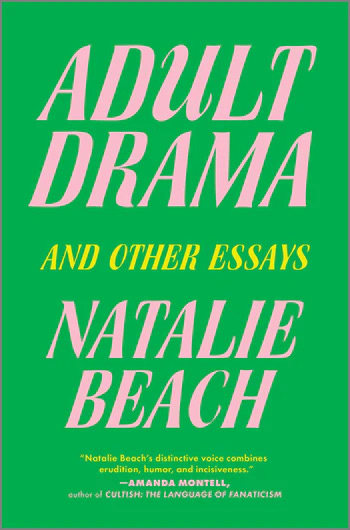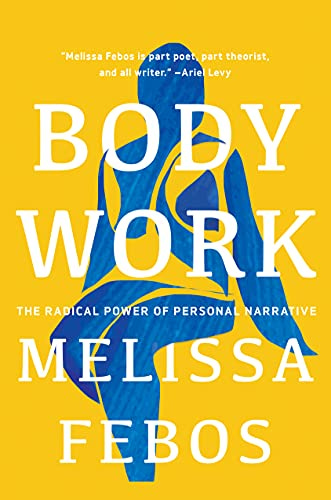SCAMMER & CONTAGION
On Caroline Calloway, sensationalism, pitches as secret traps, and literary revenge
In the fall of 2018 I was a sprite thirty-something entering graduate school. I was not yet an agent, although I had applied to every opening at Penguin Random House for several years—no interviews, all applitrack rejections. I was coming off a six-year bender as a high school teacher, and I had worked on a poetry manuscript for a few years, and then randomly threw together my tiny letters as a “nonfiction application” (I did not know that the term “braided essay” existed, but they fell in that camp), and as I walked through the hallway on … eh, let’s say the fifth day, one of the dudes in my MFA class said, “hey, Bookstagram, sup!”
And I would have thrown myself on the floor like my toddler mid-tantrum, but I was old and bitter and MFA-level insecure and instead I went back home and deleted my whole account, never to be heard from again.
I still kick myself for quitting bookstagram, especially now that I’m a publicist and I had 10k followers there. But I quit before it overtook me completely, before I became a needy influencer (though once I did get a black bar of soap from Simon & Schuster to go along with an Alice Hoffman prequel to Practical Magic, which left my apartment’s astronaut-sized shower with a cool black drip for months—so punk rock for a Bookstagrammer). I had already become someone who sat in front of the same bookshelf with that orange sepia tone filter I paid for on VSCO and took pictures of books I never planned on reading for aesthetic purposes. I was already in several instagram pods to try to trick the algorithm. If I told you now who was in some of those groups (big time book influencers, and two of them work in different publishing sectors), you would laugh.
Who did I want to be at that time? None other than Caroline Calloway herself.
Caroline Calloway and Kate Baer are the two influencers I think of as being writers first and influencers second, or people who somehow use their aesthetic-appeal to boost writing that they would have eventually turned to anyway. The writing is the center.
What I loved about Caroline Calloway was the fearlessness. She has NEVER feared a pivot. A full delete. A disappearance. A transformation. An enclave. She’s chosen when to appear, and when to stay hidden behind a reception desk in Sarasota. She’s done cerebral porn (her words), had an Orlean level obsession with wearing orchids in her hair, sold grape seed oil as facial magic to thousands calling it “Snake Oil,” had an essay by her ex-bestfriend go viral two days after her dad’s death, partied in what I imagine is the underneath of a long wooden table full of President residue in one of Harvard’s secret societies, stopped paying rent to “live in luxury” and then sublet her painted apartment (all white, including the microwave and except for the royal blue bookshelves) to Rachel Rabbit White and Nico Walker, and made a cat into an adult babydoll. She really deserves a TLC show.
The thing is, we’ve watched her be able to (with a cat in hats), make relevant the stories of young woman, make people care about what they have always told us is trivial or depthless, by taking a platform no one really knew how to use, and making it into her thing. She’s admitted to buying bots early on, I get it. Book people pay for a lot of advertising, you can’t hate the game. Instagram, an aesthetic platform, changed in Caroline Calloway’s use (if you don’t know, Caroline would write these winding captions from her time at Oxford about love, gowns & balls, and affairs). She was doing Sally Rooney before Sally Rooney. Am I allowed to say that Caroline Calloway walked so Sally Rooney could run? (Have you watched the Sally Rooney debates on Youtube? or read this essay on being a debate star?)
And in the middle of all this she got a book deal (the story goes that she tricked an agent into a meeting and then sold him on the idea. I love this alternative Mad Men universe she lives in). And then she cancelled the book deal. And then she owed Flatiron a couple hundred thousand dollars.
But last week, we got a book, not the original “School Girl” manuscript which may or may not have been ghostwritten in proposal by her ex-bestfriend Natalie Beach, but a book by Calloway, titled Scammer, that she’s been promising for years. YEARS.
I have not read the book because I haven’t figured out a reason to justify the $65 yet, but I laughed when she was sending to critics a few days (maybe even two days—a whole weekend) before she was sending to everyone who ordered a copy. I thought, “doesn’t she know how publicity works?”
Duh.
It’s genius. She’s been everywhere writers tell me they want to be: Vogue, Vanity Fair, Rolling Stone, The New Statesman, VICE. Giving critics little time makes it a race. it also makes every piece about the book say something along the lines of, “I stayed up all night to finish this” or “truly a book you could read in one sitting.” Because, if you want to compete with other outlets who are surely going to cover the book, you have to … read through the night.
She not only controlled the narrative, the timing, but the reading experience. Now, she’s already infamous so this wouldn’t work for a normie, BUT it reveals something to me about publicity. It’s really easy (across ALL publishing roles) to get stuck in the routine. It’s easy to do the expected and hope it lands. It’s easy to check a box and say “I pitched this person,” without really thinking about much beyond “fingers crossed!” It’s easy to play inside the game.
But Caroline has never, except maybe her NYC apartment, been a fan of the box. She’s an ask forgiveness, not permission gal. It’s the way I like to look at book publicity too.
A tangent: Caroline also released Scammer a few days before her … rival (?) Natalie Beach—they have competing narratives of ghostwriting Caroline’s Instagram and book proposal, both have signed movie rights over to their story (Calloway’s going to Lena Dunham and Beach’s to Netflix), and Beach has written about Calloway’s callousness, which Calloway has (in a pretty gross way about sexual assault) continued to dig into. Natalie’s debut Adult Drama, sold after the viral Cut essay “I was Caroline Calloway.” Genius. By both of them. Natalie got her dream of a book deal, which hasn’t been squandered by Caroline’s release (it had a write up in Elle, Memoirland published an essay, WaPo reviewed it next to Scammer with obvious bias toward Calloway, but it was fun to learn that Becca Rothfield is a Calloway fangirl). A little bit of publishing revenge on both sides, Calloway biding her time to steal Beach’s release thunder and Beach writing a viral essay about a friendship breakup. (They’re the worst kind of breakup, so I get it. Honor it).
I surprisingly haven’t heard Twitter talk much about the timing of the book releases or the obvious publishing duel that’s happening, but the whole story makes me wonder about book publicity and sensationalism. Has the goal AND is the goal, at its highest success rate, to create a sensation? Has the goal AND is the goal, to make your publisher design a bucket hat around your next novel, convince you to book a stay at Hotel Termush (shout out to Kat Howard who remembered this exactly).
Earlier today, I was reading the Goodreads review-bombing interview in New York Times, and Cecilia Rabess says something really interesting. When she faced a review-bomb of her debut book Everything’s Fine six months pre-publication, she said, “I was concerned about the risk of contagion,” and I had a moment like … isn’t contagion exactly what we want in publicity?
And this is fueled by the internet and algorithms, but rings a little true for the “no publicity is bad publicity” folks, don’t we love a little contagion in our book publicity?
We (the internet) loved this scathing take-down of the phrase “boy mom” in Washington Post, it went viral with the speed of light, moms banning together to say, “not me, not that.” Contagion. Natalie Beach got a book deal due to proximity and the obsession that is Caroline Calloway, “Cat Person” had the slimy guy & central question on sexual line-crossing, Fuck the Bread had the pandemic exhaustion, and Bad Art Friend, the cruelty of catty writing groups. At the center of all of these, now that I think about it, is a sprinkle (or a dousing) of spite. There’s a grudge, a thorn, a snag.
It’s how Caroline Calloway is selling Scammer. She’s leaning into the contagion. I’m not saying it’s right, all of this is a question of a writer’s boundaries within and around their work, especially once it moves from writing to publishing, and out of their hands. I mean this in the nicest way possible—but from cover to copy to reader’s expectations and responses, it is no longer the writer’s book once a contract is signed, at least never again completely. (Melissa Febos has a great essay on writing boundaries in Body Work & Lilly Dancyger wrote a thread recently about it here).
And I find myself thinking about that red line a lot in book publicity—how juicy, how unpredictable, what question, what kernel, what tiny & twisted hint could I slip into a pitch about a book that makes it, at least, a must open. A need to know. A need to find out. A scavenger hunt. A discovery. It doesn't have to be a thorny-something, but it has to be a little uncomfortable, a little wanton, a little unsaid, a little vulnerable, a little dirt under the fingernail. A secret trap, if you will.
I’d love to know:
What’s an automatic pick-up for you? (Word, cover, phrasing, theme, topic, blurber, copy, trope, etc?) What makes you say yes to one book in a bookstore instead of just carrying it around and ultimately putting it back? What conversation around a book makes you want to read it?
Maggie Smith was already famous when this short excerpt of her memoir came out in The Cut, but didn’t it make you want to read more? Didn’t it feel like a little taste and you wanted the whole meal? THAT is what makes me grab a book. When I can tell, if I scratch a little bit, it’ll open me up like the earth’s core.
—
As always, the Pine State calendar of events lives here. Request books for review & interview & feature here, add yourself to our reviewer list here, and buy our books here! You can also contact us through our website, Pinestatepublicity.com.
ICYMI: I’ve been doing backlogged prompts in Nancy Reddy’s Write More, Be Less Careful (highly recommend!), Ross White is going on tour, Jen Funk’s Fantasy of Loving the Fantasy was reviewed in Boston Globe (this is the SEXIEST poetry collection I’ve read in a long, long time), Jane Kuo’s In The Beautiful Country was selected for the First Partner’s Summer Book Club, Jenny Sadre-Orafai was interviewed in Creative Independent, Kate Doyle and Margo Steines are both on Debutiful’s Most Anticipated of 2023 Part 2 list, KB Brookins wrote a sonic bibliography for Freedom House in Oxford American, and more!










Things that make me buy a book: theme, topic, and trope, although I've been influenced by reviews too (usually NYT, NPR), and definitely by books winning the big post-pub prizes. Meeting the author through a live, small-venue reading usually does it. A blurb from one of my literary heroes and a great title/ cover make me take a second look, but they're not always clinchers. And it's funny about side pieces, because while I aspire to place more of them myself, sometimes they scoop a book--I might think "okay, I now know enough about this literary phenomenon, I don't need to read the whole thing." I need to think about whether all that math is different for indie-press books that rarely win attention in the big culture-curating industry. Recommendations from friends might matter more there, although theme-topic-trope are still big factors. Anyway, thanks--I love this newsletter.
Putting on my comms hat, I've been super impressed with how Cecilia Rabess is making lemonade out of lemons